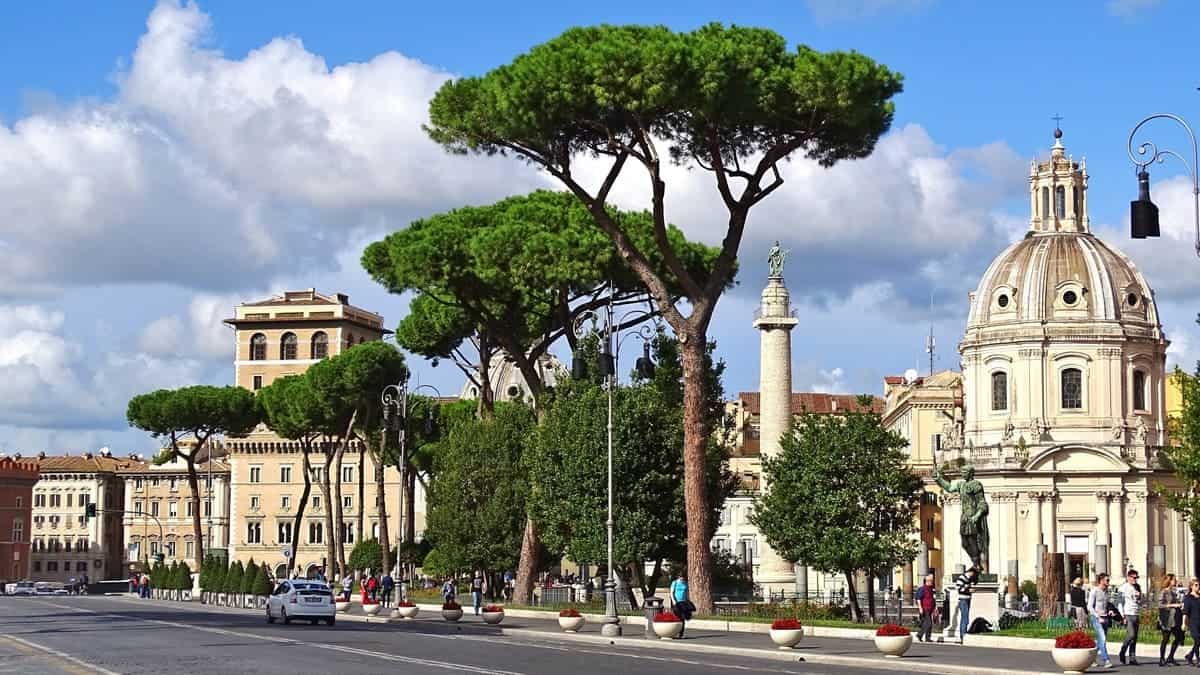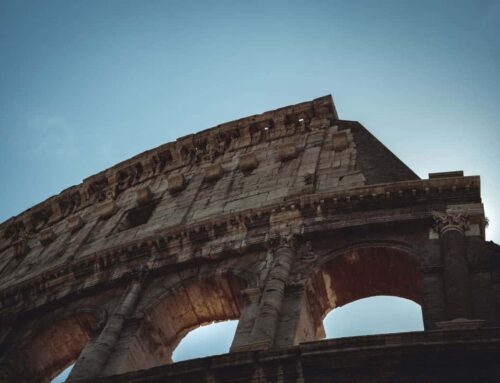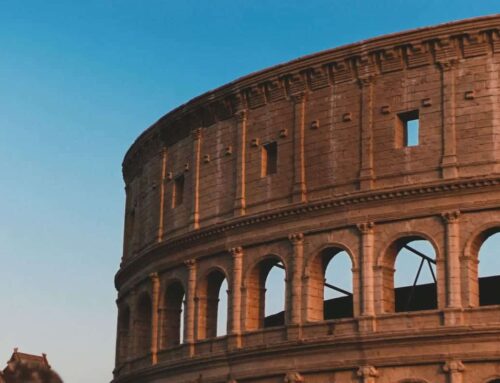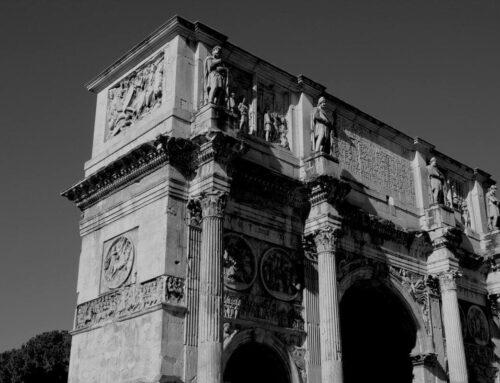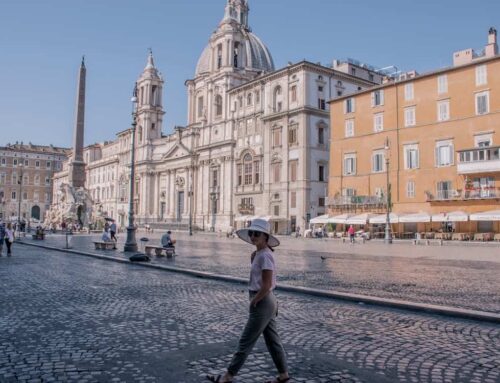Easter in Rome is not just a holiday, but a true cultural experience intertwined with the city’s millennia-old history. Rome, with its artistic and architectural heritage, transforms into a stage where ancient and modern traditions meet. During this period, the eternal city is enveloped in a unique atmosphere, blending the sacredness of religious celebrations with the joy of popular traditions. From illuminated monuments to lively streets, every corner of Rome tells a story, making Easter an ideal time to immerse oneself in Roman culture and history.
How is Easter celebrated in Rome?
Easter in Rome is primarily an occasion for deep spirituality. The city, the heart of Catholicism, comes alive with celebrations that attract believers from all over the world. Holy Week begins with Palm Sunday, when churches fill with blessed olive branches, a symbol of peace and rebirth. On Holy Thursday, many churches host the traditional “Mass of the Lord’s Supper,” commemorating Jesus’s Last Supper with his disciples.
Good Friday is a day of reflection and solemnity. The Via Crucis procession at the Colosseum is an emotionally impactful event, with the Pope leading meditations on the steps of Christ’s Passion. This tradition, retracing the stations of the cross, is a time of great participation and spiritual involvement, where the strong connection between the city’s ancient history and Christian faith is felt.
Holy Saturday is marked by the Easter Vigil, celebrating the Resurrection of Christ. This solemn mass, beginning at sunset, is rich in symbolism, including the blessing of the new fire and the baptismal water. Finally, Easter Sunday sees the celebration of the Easter mass in St. Peter’s Square, followed by the Pope’s “Urbi et Orbi” blessing, a moment of great gathering and a universal message of peace and hope.
These celebrations, though deeply rooted in religious tradition, attract not only the faithful but also those interested in experiencing the unique atmosphere of Rome during these days. The city dons its most solemn and welcoming aspect, offering everyone the chance to participate in a global event, immersed in the timeless beauty of Rome.
What to do in Rome during the Easter Weekend?
During the Easter weekend, Rome offers an abundance of possibilities for those wishing to immerse themselves in its history and culture. The city’s historic monuments, such as the Colosseum, the Imperial Forums, the Pantheon, and St. Peter’s Basilica, are open and often less crowded than usual, providing a unique opportunity to explore them more peacefully. The museums and art galleries, including the renowned Vatican Museums and Borghese Gallery, display unparalleled art collections and may host special temporary exhibitions related to Easter or spring.
Additionally, the Easter weekend is an ideal time to attend sacred music concerts. Historic churches like Santa Maria Maggiore and Sant’Ignazio di Loyola in Campo Marzio host performances by choirs and orchestras, offering a deeply touching cultural experience. The city’s squares and parks, such as Piazza Navona and Villa Borghese, come alive with Easter markets, street performers, and activities for children, creating a festive and welcoming atmosphere.
For those seeking a quieter experience, a walk through the alleys of Trastevere or along the Tiber offers moments of peace and beauty, away from the hustle and bustle of the more frequented tourist areas. This time of year, with spring in full swing, is ideal for enjoying the natural beauty of Rome and its enchanting gardens, like those of Villa Doria Pamphilj.
What to eat in Rome at Easter?
At Easter, Roman cuisine dresses up for the festival, offering traditional dishes that are true symbols of the local food and wine culture. A must-try classic is ‘abbacchio,’ roasted lamb, often accompanied by baked potatoes and flavored with aromatic herbs. ‘Coratella’ with lamb, prepared with heart, lungs, and liver, is a typical dish for those who love strong and authentic flavors.
Easter in Rome also features unique dishes like pasta alla carbonara or amatriciana, which, although not specific to the holiday, are always a popular choice for Easter family lunches or in restaurants. Additionally, the Roman-style artichoke, a spring side dish that enhances the simplicity and freshness of local ingredients, is a must.
Regarding desserts, the Easter dove and the Easter egg are undisputed protagonists. The dove, with its soft leavened dough and crunchy almond and sugar topping, is perfect to enjoy with a coffee or a glass of sweet wine. Easter eggs, often artisanal and filled with surprises, are a must for both children and adults.
Pairing these dishes with a glass of local wine, like a Frascati or a Cesanese, makes the meal even more special, offering a taste of the region’s rich wine heritage. Easter in Rome is thus an opportunity to experience a cuisine that, while maintaining its roots in tradition, always manages to surprise and delight.
What to do in Rome on Easter Monday 2024?
Easter Monday, the day after Easter Sunday, is an ideal time to explore Rome in a more relaxed manner. Traditionally, this day is dedicated to outdoor excursions and picnics. Rome’s parks, such as Villa Borghese, Parco degli Acquedotti, or Villa Ada, offer vast green spaces perfect for a family or friends picnic. These historic places not only provide natural beauty but are also rich in history and culture, with Villa Borghese housing museums and galleries, and Parco degli Acquedotti offering a spectacular view of the ancient Roman aqueducts.
For those who prefer exploring, the less-traveled streets of Rome can hold unexpected surprises, from small artisan shops to hidden cafes. Alternatively, excursions to the areas surrounding Rome, like the Castelli Romani, known for their picturesque landscapes and excellent cuisine, can be considered.
For food and wine enthusiasts, Easter Monday is a great opportunity to explore the Roman culinary scene through gastronomic tours that allow tasting typical dishes and local wines, discovering the secrets of Roman cuisine directly from its protagonists.
What to do in Rome off the beaten path?
For a unique Easter experience, Rome offers several off-the-beaten-path activities. A visit to the undergrounds of Rome is a fascinating adventure: exploring the catacombs, like those of San Callisto or San Sebastiano, or the tunnels of ancient Rome, provides a unique insight into the city’s underground history.
For nature and physical activity lovers, a bicycle tour along the Via Appia Antica is an unforgettable experience. This historic road, dotted with ancient monuments and surrounded by natural scenery, is perfect for a day trip. Additionally, for art and history enthusiasts, a guided visit to lesser-known neighborhoods, like the Coppedè district or Testaccio, can reveal surprising and lesser-known aspects of Rome.
Trust NCC services
To fully experience the magic of Rome during the Easter holidays, the Noleggio con Conducente (NCC) service, or Car Rental with Driver, offers an optimal solution for moving around the city or exploring the surroundings with maximum comfort and customization. NCC services provide not only luxurious and private transportation but also the possibility of creating tailor-made itineraries, suited to the needs and interests of each traveler.
NCC services in Rome are particularly useful for reaching more remote destinations or those less accessible by public transport, such as historic villas, natural parks around the city, or even for a trip to the Castelli Romani. Moreover, these services can facilitate visits to places of interest during the holidays, when traffic and public transport availability can be limited.
For groups or families wishing to explore the city comfortably and without worries, NCC services offer an ideal solution, eliminating logistical challenges and allowing full enjoyment of the Roman Easter experience, as well as taking anyone to events or other locations. Many NCC drivers are also qualified tourist guides or have a deep knowledge of the city, so they can add value to the trip with historical anecdotes and advice on hidden places or special events.
In conclusion, opting for an NCC service in Rome during Easter allows for a unique experience, combining the convenience of private transportation with the opportunity to discover the city in an exclusive and personalized way, thus enriching one’s holiday experience in the Eternal City.
